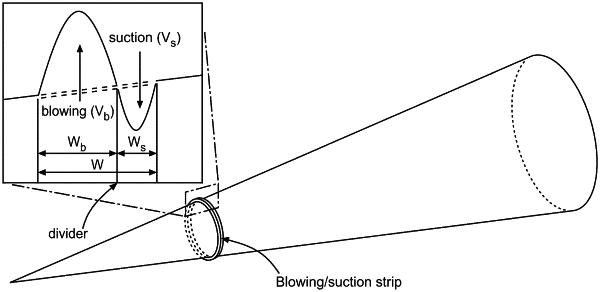| CPC B64C 23/005 (2013.01) [B64C 21/04 (2013.01); B64C 21/06 (2013.01); B64C 30/00 (2013.01)] | 16 Claims |

|
1. A method of controlling boundary-layer transition for a hypersonic vehicle, the method comprising:
determining a location of onset of boundary-layer transition that naturally develops during hypersonic flight of the hypersonic vehicle; and
providing a pair of flow control strips imbedded in a surface or wall or skin of the hypersonic vehicle such that the boundary-layer transition is delayed or prevented during hypersonic flight of the hypersonic vehicle, the pair of flow control strips comprising an upstream strip and a downstream strip, and the upstream strip and the downstream strip are immediately adjacent and share a common divider,
wherein the delayed or prevented locations of the transition result in a change in the hypersonic boundary layer during the hypersonic flight of the hypersonic vehicle, and
wherein the change in the hypersonic boundary layer transition affects skin friction drag, aero-thermodynamic heating, and pressure fluctuations in the boundary layer of the hypersonic vehicle.
|